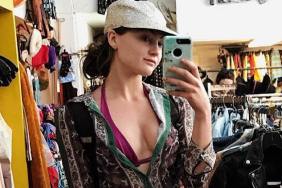Photo: Robin Schwartz, Charlie, 1988, Chimpanzee, female, 5 years old, Copyright Robin Schwartz.
Last month, The New Indian Express recently reported the capture of a young girl who had been living with a troop of monkeys in the jungles of Katrraniyaghat, India. The world press went wild for the story of a feral child, with visions of Rudyard Kipling’s Mowgli dancing in their prose.
Also: Enter the Fantastical Realm of Photographer Karen Knorr
“She behaves like an ape and screams loudly if doctors try to reach out to her,” says Dr. DK Singh, chief medical superintendent, Bahraich District Hospital, told the newspaper, adding that she walks, eats, and sits like monkeys.

Robin Schwartz, Shibu, 1989, Crab-eating macaque, male, 18 months old, Copyright Robin Schwartz
But the fantastical tale was short-lived as The Washington Post soon reported that the girl had been abandoned a mere hours or days before being recovered. It has been suggested her parents left her near an outpost, forsaking an unwanted daughter in a society that prized sons.
Invariably, what occurred speaks to a distinctly human trait: a complete lack of interest in viable offspring, discarded and left for death because the gender has been so degraded by the society in which it exists. What’s telling is that this aspect of the story was disregarded in favor of playing up unfounded rumors of interspecies relationships.
Our fascination with interspecies relationships cuts both ways. The counterpoint to the myth of Mowgli is anthropomorphization of animals. Consider the curious black and white photographs of Robin Schwartz, made between 1987 and 1992, that take us inside the world of simians being raised in domestic environments. “I don’t think they are funny or sad. They’re just like people,” she tells Time.

Robin Schwartz, Josh, Hermonie, Alexis, Rene and Ewok, 1988, Chimpanzees, all under 1 year old, Copyright Robin Schwartz
Currently on view in the exhibition, Like Us: Primate Portraits by Robin Schwartz at the Alice Austen House, New York, now through May 28, 2017, Schartz’s rarely-shown photographs present scenes of mandrills, chimpanzees, gibbons, baboons, a ring-tailed lemur, and even a lowland gorilla living in human environments.
Many of these animals had been rescued from precarious situations, and thus belong nowhere. Unable to be properly assimilated back into the wild, their options are few, and require them, in one form or another, to adapt themselves to unnatural environments. Because they were born in captivity, they will die in it, never to live as nature intended.
Yet, when one considers the options: zoos, laboratories, circuses, or domiciles, it becomes even more complex. What is best for these creatures might simply be a matter of conscience. In Schartz’s photographs, it becomes increasingly ambiguous. Consider the image of Minnie, the 13-year-old stump-tailed macaque, sitting on a floral sofa, drinking Canfield’s Diet Chocolate Fudge soda out of a can through a straw. It’s alternately charming or disconcerting, depending on your vantage point.

Robin Schwartz, Minnie, 1989, Stump-tailed macaque, female, 13 years old, © Robin Schwartz
As the photographs progress, Schwartz exposes us to the human fascination with the anti-Mowgli—the anthropomorphized primate. They lounge on the sofa long with stuffed animals or relax with household pets, wearing outfits like sailor suits and lace gowns that endears itself to those who find such actions relatable.
The fact that a great many of these creatures are so young is particularly heartbreaking for it is known that once they grown into adolescence, they can become rebellious, making their futures insecure. That we do not know what became of them imbues these photographs with a tragic potency.
In a statement, Schwartz explains her purpose and her goal, “Photographing animals and the people that are devoted to animals is what I have always cared about and is the driving force in all my work. Photography and animals are my passport to each other. I see animals as my spiritual connection; my religion; my vice; my addiction. Animals calm me; comfort me—they save me.”
Miss Rosen is a journalist covering art, photography, culture, and books. Her byline has appeared in L’Uomo Vogue, Vogue Online, Whitewall, The Undefeated, Dazed Digital, Jocks and Nerds, and L’Oeil de la Photographie. Follow her on Twitter @Miss_Rosen.





